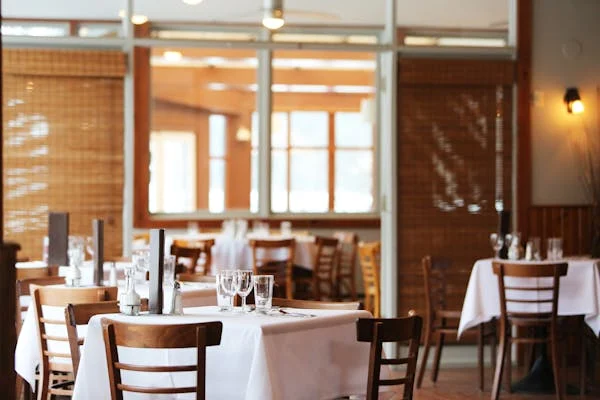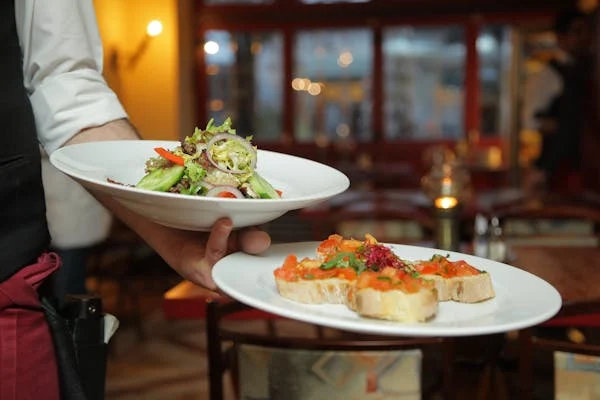Running a restaurant can be challenging, especially when it comes to marketing on a tight budget. The good news is that there are many cost-free marketing strategies that can help you attract new customers, build loyalty, and boost your restaurant’s visibility. In this article, we’ll explore various effective and actionable marketing tactics that won’t cost you a dime but can make a significant impact on your business.
Leverage Social Media
Utilize Instagram Stories and Reels
Instagram Stories and Reels are powerful tools for capturing attention and engaging with your audience in a dynamic way. Use Stories to share daily specials, behind-the-scenes content, and quick updates about your restaurant. Engage with your audience by using interactive features like polls, Q&A sessions, and countdowns for upcoming events.
Reels, with their short, engaging video format, are perfect for showcasing the preparation of your dishes, chef highlights, and customer testimonials. These formats can help you reach a broader audience and keep your followers engaged with fresh, exciting content.
Host Social Media Contests
Running contests on social media can significantly boost engagement and attract new followers. Design contests that are easy to enter and have attractive prizes, such as a free meal or gift card. For example, you could host a photo contest where customers post pictures of their meals at your restaurant with a specific hashtag.
Encourage participants to tag your restaurant and share their posts to increase visibility. Announce the winner on your social media channels and feature their post, which can further promote your restaurant.
Collaborate with Micro-Influencers
Micro-influencers often have highly engaged followers and can offer more authentic endorsements. Identify local micro-influencers who resonate with your target audience and invite them to your restaurant for a complimentary meal.
Ask them to share their experience on their social media channels. This collaboration can introduce your restaurant to a new audience and generate authentic content that highlights your food and atmosphere. The key is to choose influencers whose followers are likely to be interested in your restaurant.
Create Themed Content Series
A themed content series can provide structure to your social media posts and keep your audience looking forward to your updates.
For instance, you could start a “Monday Meal Prep” series where you share recipes or meal prep tips every Monday, or a “Friday Feature” where you highlight a different dish or drink each week. These regular series not only keep your content varied and interesting but also encourage your followers to check back regularly for new posts.
Engage with Local Community Groups
Join local community groups on platforms like Facebook and Nextdoor. Participate in discussions, share your restaurant’s updates, and engage with members in a meaningful way.
Offering advice on food-related topics, posting about local events your restaurant is involved in, or sharing special promotions can help build a connection with the local community. Being an active member of these groups can increase your restaurant’s visibility and drive more local traffic to your business.
Use User-Generated Content
User-generated content (UGC) is a goldmine for authentic and engaging posts. Encourage your customers to share their dining experiences on social media and tag your restaurant. Repost their photos, reviews, and stories on your own social media channels, giving credit to the original creators.
This not only provides you with a steady stream of content but also makes your customers feel valued and appreciated. Highlighting UGC also adds a layer of social proof, showing potential customers that others enjoy your restaurant.
Share Behind-the-Scenes Content
People love getting an insider’s look at their favorite places. Share behind-the-scenes content that showcases the hard work and passion that goes into running your restaurant.
This could include videos of your chefs preparing dishes, stories about your staff, or a look at how you source your ingredients. Behind-the-scenes content humanizes your brand and can create a deeper connection with your audience.
Highlight Customer Stories
Sharing customer stories is another way to build a connection with your audience. Feature stories about memorable dining experiences, customer milestones celebrated at your restaurant, or regular patrons who have interesting backgrounds.
These stories can be shared through posts, videos, or even blog articles linked from your social media channels. Highlighting your customers shows that you value them and helps potential diners see your restaurant as a community hub.
Use Facebook and Instagram Live
Live streaming is an excellent way to engage with your audience in real-time. Use Facebook and Instagram Live to host events, such as live cooking demonstrations, Q&A sessions with your chefs, or virtual restaurant tours.
Promote your live sessions in advance to build anticipation and ensure good attendance. During the live stream, interact with viewers by answering their questions and responding to their comments. Live sessions create a sense of immediacy and can be a fun way to showcase your restaurant’s personality.
Create Interactive Content
Interactive content can significantly boost engagement on social media. Use features like polls, quizzes, and interactive stories to involve your audience.
For example, you could create a poll asking followers to vote on their favorite dish or a quiz that helps them find the perfect menu item based on their preferences. Interactive content not only engages your audience but also provides you with valuable insights into their tastes and preferences.
Promote User-Generated Hashtags
Create and promote a unique hashtag for your restaurant. Encourage your customers to use this hashtag when they post about their dining experience at your restaurant. Feature this hashtag prominently in your restaurant, on your menus, and in your social media bios.
Regularly check the hashtag to engage with posts from your customers. This not only helps in building a community around your brand but also makes it easier for potential customers to find authentic content related to your restaurant.
Optimize Your Online Presence

Enhance Your Website’s User Experience
A user-friendly website is crucial for retaining visitors and converting them into customers. Ensure that your website is visually appealing, easy to navigate, and mobile-responsive. Include clear and accessible menus, with well-organized categories such as appetizers, main courses, desserts, and drinks.
High-quality images and detailed descriptions of your dishes can make your menu more appealing. Implement an easy-to-use reservation system and ensure that your contact information is prominently displayed on every page. Regularly test your website on various devices and browsers to ensure a seamless experience for all users.
Implement SEO Best Practices
Search Engine Optimization (SEO) is essential for improving your website’s visibility in search engine results. Start by conducting keyword research to identify the terms and phrases your potential customers are searching for. Incorporate these keywords naturally into your website’s content, including your titles, meta descriptions, headings, and image alt text.
Create a blog section where you can publish SEO-friendly articles about your cuisine, recipes, or dining experiences. Use internal linking to help search engines understand the structure of your website and improve user navigation.
Leverage Local SEO Techniques
Local SEO focuses on optimizing your online presence to attract more business from relevant local searches. Ensure that your business name, address, and phone number (NAP) are consistent across all online directories and your website.
Optimize your Google My Business profile with up-to-date information, including your hours of operation, contact details, and high-quality photos of your restaurant and dishes. Encourage satisfied customers to leave reviews on Google and other review sites, as positive reviews can boost your local search rankings.
Utilize Schema Markup
Schema markup is a type of microdata that helps search engines understand your content better and provide more informative results to users.
Implement schema markup on your website to enhance your restaurant’s search listings with rich snippets, such as star ratings, business hours, and location details. This can improve your click-through rates and attract more potential customers. Use tools like Google’s Structured Data Markup Helper to easily add schema markup to your website.
Optimize for Mobile Search
With an increasing number of people using their smartphones to search for restaurants, optimizing your website for mobile search is crucial. Ensure that your website loads quickly on mobile devices, as slow load times can lead to higher bounce rates.
Use a responsive design that adapts to different screen sizes and provides a seamless user experience. Simplify your navigation and make sure that key information, such as your menu, location, and contact details, is easily accessible on mobile.
Create High-Quality Content
High-quality content can drive traffic to your website and engage your audience. Regularly update your blog with interesting articles related to your restaurant, such as behind-the-scenes stories, chef interviews, or the history of your cuisine.
Share recipes, cooking tips, and food pairing suggestions to provide value to your readers. High-quality content can also improve your SEO by increasing the time visitors spend on your site and encouraging them to share your content on social media.
Engage with Online Reviews
Online reviews play a significant role in a restaurant’s reputation and can influence potential customers. Monitor review sites such as Yelp, TripAdvisor, and Google Reviews regularly to stay informed about what customers are saying.
Respond promptly and professionally to all reviews, thanking customers for positive feedback and addressing any concerns raised in negative reviews. Showing that you value customer feedback and are willing to make improvements can enhance your restaurant’s image and build trust with potential diners.
Integrate Social Media and Your Website
Integrating your social media profiles with your website can enhance your online presence and drive traffic between the two platforms. Include social media buttons on your website to encourage visitors to follow you on Facebook, Instagram, Twitter, and other platforms.
Display a social media feed on your homepage to showcase your latest posts and engage visitors. Use social media to promote your website content, such as blog posts and special promotions, to increase visibility and attract more visitors.
Utilize Email Marketing
Email marketing is a powerful tool for keeping your customers informed and engaged. Build an email list by offering incentives such as discounts or a free appetizer for signing up. Send regular newsletters to share updates about your restaurant, upcoming events, new menu items, and exclusive offers.
Personalize your emails with the recipient’s name and tailor the content to their preferences to increase engagement. Use email analytics to track open rates, click-through rates, and conversions to refine your email marketing strategy.
Leverage Video Content
Video content is highly engaging and can help you connect with your audience on a deeper level. Create videos that showcase your restaurant’s ambiance, introduce your chefs, and highlight the preparation of your signature dishes.
Share customer testimonials and behind-the-scenes footage to give viewers an inside look at your restaurant. Post these videos on your website, social media channels, and YouTube to reach a wider audience and drive traffic to your site.
Offer Online Reservations
Providing an online reservation system can enhance the customer experience and streamline your operations. Use a reservation platform like OpenTable or Resy to allow customers to book a table directly from your website or social media profiles.
Highlight special events or promotions to encourage reservations. Ensure that your staff is trained to manage online reservations and integrate them seamlessly with your in-house booking system.
Optimize Your Website for Voice Search
As voice search becomes more popular, optimizing your website for voice queries can help you capture this growing segment of search traffic. Focus on long-tail keywords and natural language phrases that people are likely to use in voice searches.
For example, instead of targeting “best Italian restaurant,” optimize for “Where can I find the best Italian restaurant near me?” Provide clear and concise answers to common questions about your restaurant, such as your opening hours, menu items, and location.
Collaborate with Food Delivery Platforms
Partnering with food delivery platforms like Uber Eats, DoorDash, and Grubhub can increase your restaurant’s visibility and attract new customers. Ensure that your menu is accurately listed and includes high-quality photos of your dishes.
Encourage satisfied customers to leave reviews on these platforms to boost your ratings. Promote your delivery options on your website and social media to inform your audience that they can enjoy your food from the comfort of their homes.
Harness the Power of Word-of-Mouth
Deliver Exceptional Customer Service
One of the most effective ways to generate positive word-of-mouth marketing is by delivering exceptional customer service. Train your staff to be attentive, friendly, and knowledgeable. Ensure that every customer feels valued and appreciated from the moment they walk in until they leave.
Address any issues promptly and professionally to turn potentially negative experiences into positive ones. Happy customers are more likely to share their positive experiences with friends and family, driving new business to your restaurant.
Personalize the Dining Experience
Personalizing the dining experience can make a significant impact on customer satisfaction. Remember regular customers’ names and their favorite dishes. Offer personalized recommendations based on their preferences.
Celebrate special occasions like birthdays or anniversaries with complimentary desserts or personalized greetings. These small touches can create memorable experiences that customers are eager to share with others.

Related: Check out our free tools:

Engage with Customers Post-Visit
Following up with customers after their visit can reinforce a positive experience and encourage word-of-mouth referrals. Send a thank-you email or message, asking for feedback on their dining experience.
Invite them to join your loyalty program or inform them about upcoming events and promotions. Engaging with customers post-visit shows that you value their patronage and are committed to maintaining a relationship with them.
Create Shareable Moments
Design your restaurant and dining experience to include shareable moments that customers will want to talk about and capture on social media. Unique interior design, signature dishes with creative presentations, and interactive dining experiences can all become conversation starters.
Encourage customers to take photos and share their experiences online by creating Instagram-worthy settings and using table tents or signage that prompts them to tag your restaurant in their posts.
Leverage Customer Testimonials
Customer testimonials are a powerful form of word-of-mouth marketing. Collect and showcase positive testimonials on your website, social media, and marketing materials.
Ask satisfied customers if they would be willing to share a brief testimonial about their experience. Featuring these testimonials can build trust with potential customers and provide social proof that your restaurant offers a great dining experience.
Host Exclusive Events for Regulars
Hosting exclusive events for your regular customers can strengthen their loyalty and encourage them to spread the word about your restaurant. Invite them to VIP nights, menu tastings, or special themed events.
These exclusive experiences can make regulars feel appreciated and more likely to recommend your restaurant to others. Promote these events through personalized invitations and social media announcements.
Implement a Loyalty Program
A well-structured loyalty program can incentivize customers to return more frequently and refer others. Offer rewards such as discounts, free items, or special privileges for repeat visits. Provide referral bonuses for customers who bring in new diners.
Promote your loyalty program through your website, social media, and in-restaurant signage to encourage participation. A successful loyalty program can turn satisfied customers into brand advocates who actively promote your restaurant.
Encourage User-Generated Content
User-generated content (UGC) is a valuable asset for word-of-mouth marketing. Encourage customers to share their dining experiences on social media using a branded hashtag. Feature the best UGC on your own social media channels and website, giving credit to the original creators.
This not only provides you with authentic content but also motivates other customers to share their experiences. UGC acts as a testament to the quality of your restaurant and can influence potential customers to visit.
Partner with Influencers and Bloggers
Collaborating with local influencers and food bloggers can amplify your word-of-mouth marketing efforts. Invite them to dine at your restaurant and share their experience with their followers. Offer a complimentary meal in exchange for an honest review and social media posts.
Influencers and bloggers can introduce your restaurant to a wider audience and lend credibility to your brand. Their endorsements can encourage their followers to visit and share their own positive experiences.
Create a Referral Program
A referral program can turn your customers into active promoters of your restaurant. Offer incentives such as discounts, free appetizers, or loyalty points for customers who refer friends and family. Clearly explain the referral process and rewards to make it easy for customers to participate.
Promote your referral program on your website, social media, and in your restaurant. A well-executed referral program can generate a steady stream of new customers through personal recommendations.
Highlight Community Involvement
Being active in your local community can enhance your restaurant’s reputation and generate positive word-of-mouth. Participate in community events, sponsor local sports teams, or collaborate with nearby schools and charities.
Highlight your community involvement on your website and social media to show that your restaurant is committed to giving back. Community engagement can build goodwill and encourage locals to support your restaurant and spread the word.
Utilize Email Marketing for Advocacy
Email marketing can be an effective tool for encouraging word-of-mouth referrals. Send regular newsletters with updates about your restaurant, special promotions, and exclusive offers for subscribers. Include a call-to-action asking recipients to forward the email to friends and family.
Offer incentives for referrals, such as discounts or loyalty points. Engaging with your email subscribers can keep your restaurant top of mind and encourage them to share their positive experiences with others.
Respond to Online Reviews
Proactively responding to online reviews shows that you value customer feedback and are committed to continuous improvement. Thank customers for positive reviews and address any issues raised in negative reviews with professionalism and a willingness to make things right.
Potential customers often read online reviews before choosing a restaurant, so demonstrating responsiveness and a commitment to customer satisfaction can positively influence their decision.
Collaborate with Local Businesses
Build Strong Partnerships
Forming strong partnerships with local businesses can be mutually beneficial and help expand your reach within the community. Identify businesses that complement your restaurant, such as coffee shops, bookstores, florists, or fitness centers.
Approach these businesses with collaborative ideas that offer value to both parties. For example, you could create a joint promotion where customers who visit both establishments receive a discount or a special offer. Building strong partnerships involves regular communication, shared goals, and a commitment to mutual success.
Host Joint Events
Hosting joint events with local businesses can draw in crowds and create buzz. Consider co-hosting a themed night, such as a wine and cheese pairing with a local winery, a book signing event with a nearby bookstore, or a fitness and healthy eating workshop with a local gym.
These events can be promoted through both businesses’ marketing channels, doubling the exposure and attracting a diverse audience. Joint events provide opportunities for cross-promotion and can introduce your restaurant to new potential customers.
Create Co-Branded Marketing Materials
Co-branded marketing materials can enhance the visibility of your collaborations and attract more customers. Design flyers, posters, and social media graphics that feature both your restaurant and your partner business.
Distribute these materials in both locations and on your respective online platforms. Co-branding demonstrates a united front and can amplify the reach of your marketing efforts. Additionally, it reinforces the partnership in the eyes of your customers, encouraging them to support both businesses.
Offer Cross-Promotional Deals
Cross-promotional deals can incentivize customers to visit both your restaurant and your partner business. For example, you could offer a discount on a meal at your restaurant for customers who make a purchase at your partner’s store, and vice versa.
Create loyalty cards that can be stamped at both locations, offering a reward when the card is fully stamped. These deals encourage customers to explore both businesses and can drive traffic in both directions.
Collaborate on Social Media Campaigns
Social media is a powerful tool for collaborative marketing. Work with local businesses to run joint social media campaigns that highlight your partnership. Share each other’s posts, tag each other in relevant content, and create collaborative posts that showcase the benefits of your partnership.
Run joint contests or giveaways that require participants to follow both businesses’ social media accounts, like and share posts, or visit both locations. Collaborative social media campaigns can expand your online reach and engage a broader audience.
Share Space for Pop-Up Shops
If your restaurant has extra space, consider hosting pop-up shops for local businesses. This can attract their customers to your restaurant, providing additional exposure and potential sales. Pop-up shops create a dynamic and exciting atmosphere and can draw in curious passersby.
In return, you can negotiate to have your restaurant featured at their business location during special events or busy times. Sharing space for pop-up shops fosters a sense of community and supports local entrepreneurship.
Collaborate on Content Creation
Content creation is an excellent way to leverage each other’s strengths and reach new audiences. Partner with local businesses to create blog posts, videos, or podcasts that feature both of your establishments.
For example, you could create a video series that highlights a day in the life of your restaurant and your partner business, showing behind-the-scenes operations and interviews with staff. This collaborative content can be shared across both of your digital platforms, increasing visibility and engagement.
Participate in Local Markets and Fairs Together
Local markets and fairs provide excellent opportunities for collaboration. Share a booth with a complementary business to reduce costs and attract a wider range of customers. Offer combined deals or packages that highlight both businesses’ offerings.
Use these events to network, distribute promotional materials, and engage with the community. Participating in local markets and fairs together can strengthen your partnership and boost your presence in the community.
Exchange Mentions in Newsletters
Newsletters are a valuable channel for reaching your loyal customer base. Partner with local businesses to exchange mentions in each other’s newsletters. Feature special promotions, upcoming events, or new products from your partner business, and ask them to do the same for you.
This strategy helps introduce your restaurant to a new audience and adds value to your newsletter content. Cross-promotion in newsletters can increase subscriber engagement and drive traffic to both businesses.
Support Local Schools and Charities Together
Partnering with local schools and charities can enhance your community presence and build goodwill. Collaborate with other businesses to support fundraising events, donation drives, or sponsorship opportunities. For example, you could co-sponsor a charity dinner, a school sports event, or a community clean-up day.
Highlight these collaborative efforts on your social media and website to show your commitment to the community. Supporting local causes together can strengthen your reputation and foster a positive relationship with local residents.
Utilize Local Media

Local media outlets are always looking for interesting stories about community businesses. Partner with other local businesses to create newsworthy events or initiatives that can be featured in local newspapers, magazines, or TV segments.
For example, you could launch a community project, host a large-scale event, or introduce an innovative collaboration that benefits the community. Pitch these stories to local media to gain exposure and highlight the positive impact of your partnership.
Engage in Cross-Training Opportunities
Cross-training opportunities with local businesses can enhance your staff’s skills and provide mutual benefits. For example, you could arrange for your kitchen staff to visit a local bakery for a day to learn about pastry making, while the bakery’s staff visit your restaurant to learn about savory cooking techniques.
These experiences can foster collaboration, inspire creativity, and improve the overall quality of your offerings. Additionally, sharing these cross-training experiences on social media can highlight your commitment to professional development and community engagement.
Conclusion
Marketing your restaurant effectively without spending money may seem challenging, but with creativity and strategic planning, it is entirely achievable. By leveraging social media, optimizing your online presence, harnessing the power of word-of-mouth, and collaborating with local businesses, you can create a robust marketing strategy that attracts and retains customers.
Read Next:
- How to Effectively Market Your Conference
- Innovative Marketing Strategies for Medical Practices
- How Photographers Can Market Their Services
- Innovative Ways to Use QR Codes in Marketing
- Essential Collateral for Your Marketing Campaigns






















Comments are closed.